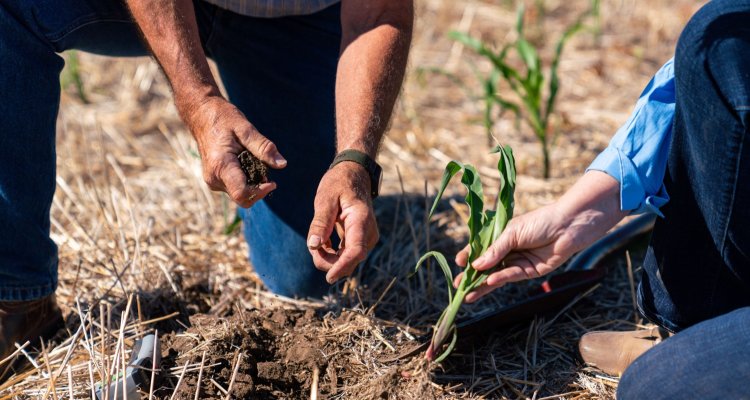
Impact story
Climate test for farmers
The impact of climate change on agriculture is significant. At Wageningen University & Research, the aim is to make farmers more aware of the problem and to give them advice on what they can do. Therefore, the Climate Stress Test was developed as a method by which researchers can identify the risks of climate change for a specific farm.
The aim, in a knowledge transfer project, was to make farmers aware of climate change and its urgency for their food production. After farmers are made aware, dialogues can be initiated to discuss challenges and possibilities. In addition, farms can be made more resilient to climate change. This is done by means of, for instance, master classes, but as well as the Climate Stress Test. The Climate Stress Test is a method researchers use to identify the risks of climate change for a specific farm.
Two climate scenarios
In the test, the Netherlands is divided into five regions. For example, temperature inland is often higher and extreme precipitation occurs more often along the coast. The test examines two of the four climate scenarios developed by the Royal Netherlands Meteorological Institute (KNMI) for 2050: 1) the most extreme and 2) the most moderate. The consequences for farmers are therefore dependent on how extremely the climate is going to change. The test focuses on recognisable cropping schemes for those five regions where many crops are cultivated, such as potatoes, sugar beet, root vegetables, cereals and onions, and shows how vulnerable they are to extreme weather conditions. Onions and potatoes, for example, are vulnerable to droughts; cereals much less so. In the years ahead, researchers will also add other crops to the test, such as kidney beans, broad beans and soy.
Other crops
At present, the test is still a tool that researchers execute themselves, but they are also working on developing an app that farmers can use for themselves. Aside from arable farmers, insurers were also involved in the research. It is also worthwhile for them to know how farms can reduce their vulnerability, because if they increasingly have to compensate for extreme weather damages, the premiums will rise tremendously.
Possibilities
WUR is working on the realisation of the tool from the stress test. The development of the tool will focus on its practical use and will therefore be carried out in cooperation with a number of stakeholder parties. The aim is to set up a user-friendly tool that provides insight into climate change risks at farm level as well as links to possible climate adaptive measures. Research to incorporate these measures into the tool is carried out. For example, there are ways to use water more economically during dry spells and to improve soil quality so that farmers can better deal with extreme weather conditions. Farmers can adapt their management to the changing climate, by for example improve the water holding capacity of the soil and reduce soil compaction (the soil is compressed by heavy machinery which prevents the roots from reaching deeper water). Farmers also share their experiences and can learn from each other. If these adaptations don't work, the farmers could consider switching to crops that are better suited to extreme weather conditions.
Climate change is increasingly impacting agriculture in the Netherlands. Tools such as the climate stress test can help by prioritising problems and therefore allowing targeted adaptation advice.
- Unfortunately, your cookie settings do not allow videos to be displayed. - check your settings